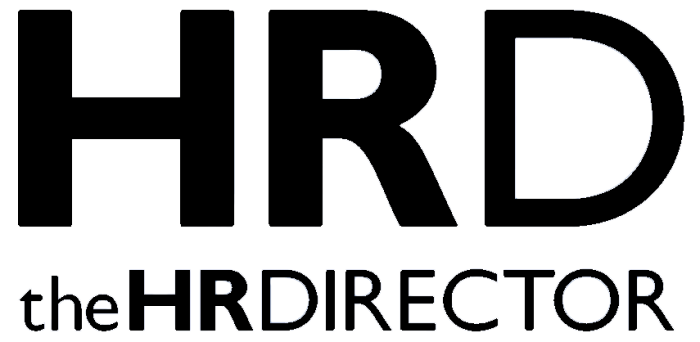Retailers and hospitality businesses face unprecedented challenges stemming from economic pressures, increasing tax burdens and soaring employee turnover. According to the latest 2025 State of the UK Hourly Workforce*, 63% of hourly employees intend to leave their roles within the next 12 months. Concerningly, for workers aged 18-24, this number spikes to an alarming 79%.
The financial impact of this staff turnover is significant, with replacement costs for frontline employees averaging between £1,500 and £3,000 per person. Beyond monetary loss, high turnover disrupts operations, negatively affects customer experience (CX) and destabilises teams. However, this bleak outlook is not inevitable. By leveraging AI-powered workforce automation, businesses can tackle the root causes of dissatisfaction to revolutionise the frontline employee experience.
Economic and regulatory shifts are leading to greater instability across the hourly workforce. Recent fiscal measures, including the reduction of the employer National Insurance threshold from £9,100 to £5,000 by UK Chancellor Rachel Reeves, have heightened financial pressures on employers. The British Retail Consortium warns that such policies could eliminate up to 160,000 part-time retail jobs over the next three years, constricting opportunities for young workers that make such an important contribution to the retail sector at large.
These macroeconomic challenges have further eroded business confidence. The Federation of Small Businesses reports confidence levels at their lowest since the pandemic, with tax burdens and weak economic growth identified as major barriers. These pressures trickle down to store managers and hourly employees, resulting in increased administrative workloads and heightened financial insecurity.
Moreover, the UK’s inflation rate, which reached 10.1% in early 2023, continues to strain both businesses and consumers. With rising labour costs and tightening margins, retailers are forced to choose between raising prices or cutting labour. But cutting staff can backfire, leading to lower service quality and greater customer dissatisfaction. Simply put, the traditional responses of price hikes or staffing cuts are unsustainable.
Poor workforce management practices undermine frontline operations
Many retailers rely on outdated tools such as spreadsheets for scheduling, time tracking, and attendance management. Managers routinely spend significant time on administrative tasks, leaving them little room to focus on team development or customer engagement. This operational disconnect contributes to employee dissatisfaction and turnover, leaving businesses in a costly cycle of attrition.
The expectations of today’s hourly employees are rapidly shifting. Flexibility and financial wellness are emerging as key drivers of job satisfaction. Schedule flexibility has become a top priority, particularly among Gen Z and Millennials, who are more likely to leave roles that fail to offer control over their work schedules. Furthermore, younger workers increasingly value benefits like Earned Wage Access (EWA), which allows them to access earned income before payday. Yet, despite the demand for these programmes, the majority of employers have yet to implement them, an opportunity missed to enhance both retention and loyalty.
The role of AI-powered workforce automation
In this challenging market, AI-driven workforce automation represents a lifeline for businesses striving to overcome retention issues while managing costs. Intelligent solutions offer transformative potential by addressing inefficiencies, enabling flexibility and fostering financial wellness.
AI-enabled scheduling systems alleviate the burden of manually coordinating employee rosters. These systems predict staffing needs, optimise labour allocation and account for employee preferences, creating equitable schedules that boost both transparency and trust. Automation ensures top performers are scheduled during peak demand, while also balancing workloads to improve employee satisfaction.
Real-time flexibility, enabled through mobile self-service platforms, empowers employees to manage their schedules more effectively. These tools allow workers to swap shifts, claim extra hours and update their availability with ease. This autonomy not only enhances work-life balance, but also reduces administrative strain on managers, fostering a more harmonious workplace environment.
Moreover, AI integration streamlines administrative tasks like payroll management, compliance tracking and timekeeping, enabling managers to focus on strategic priorities like training, staff engagement and customer service delivery.
Bridging communication gaps
Although technology is a critical piece of the puzzle, addressing communication shortfalls is equally important in retaining top talent. Workers increasingly seek recognition for their efforts, with many indicating that better acknowledgment of hard work would enhance their job satisfaction. AI-driven platforms can facilitate real-time feedback, provide personalised performance insights and deliver automated rewards, creating a culture of appreciation and trust.
Benefits and ROI
The adoption of AI-powered workforce management automation delivers substantial benefits for businesses by optimising efficiency, boosting employee satisfaction and reducing operational costs. Intelligent scheduling systems enhance labour allocation by aligning employee preferences and availability with business demands, ensuring fairness and productivity. Real-time tools for flexibility empower employees to manage their schedules autonomously, fostering a healthier work-life balance and increasing retention. Automation of administrative tasks such as payroll and compliance tracking enables managers to focus on strategic priorities like team engagement and customer service.
From a ROI perspective, the software significantly reduces costs associated with high employee turnover by improving retention rates through flexibility and financial health initiatives such as EWA. It also minimises inefficiencies caused by manual processes, cutting down manager workloads and errors in order to enhance operational precision.
Retail – and its next generation of retail talent – can’t wait for action
Clearly, employers must adapt or face mounting turnover rates, shrinking talent pools and escalating operational costs. By embracing AI-powered workforce automation, businesses can unlock greater efficiency, offer flexible and supportive work environments and secure a competitive edge in an uncertain labour market.
As businesses navigate these complexities, those that prioritise intelligent scheduling, employee autonomy and financial wellness will lead the charge in reshaping the hourly employment landscape.
Ultimately, this transformation is not just about surviving the current crisis, it’s about breaking the cycle and building a resilient, engaged and loyal workforce for the future.
*Legion Technologies research 2025 State of the UK Hourly Workforce,







